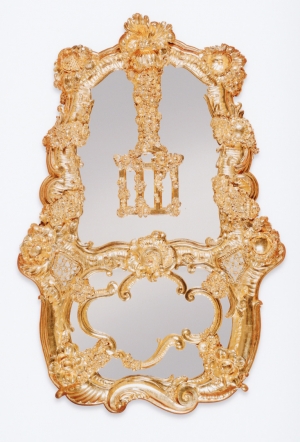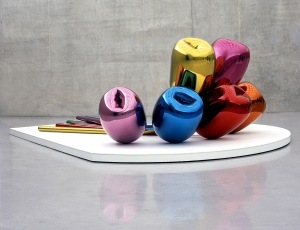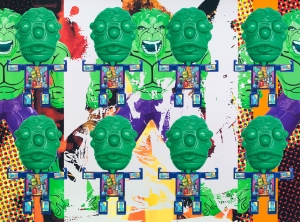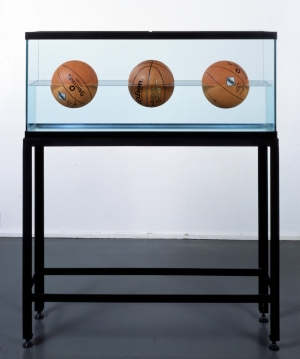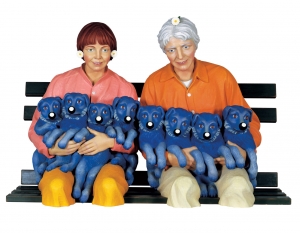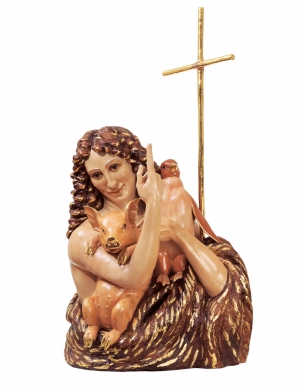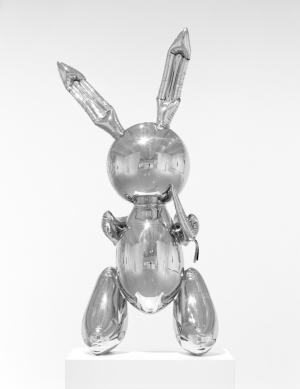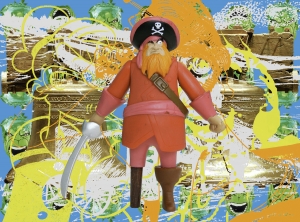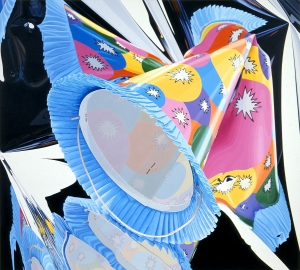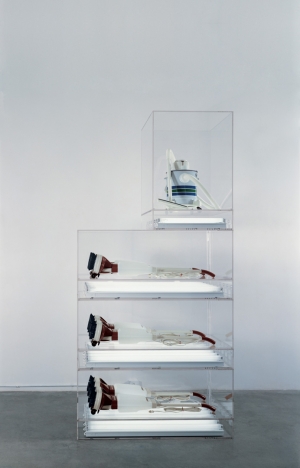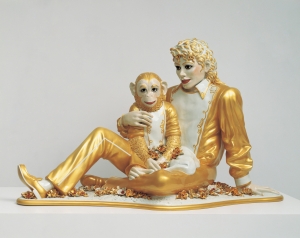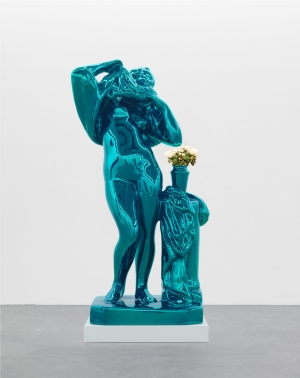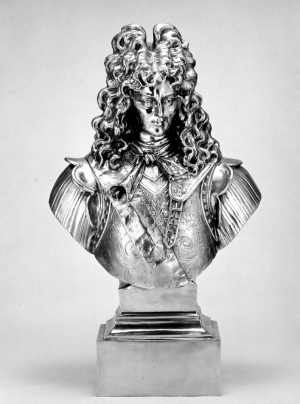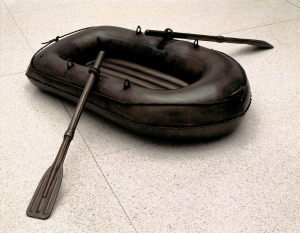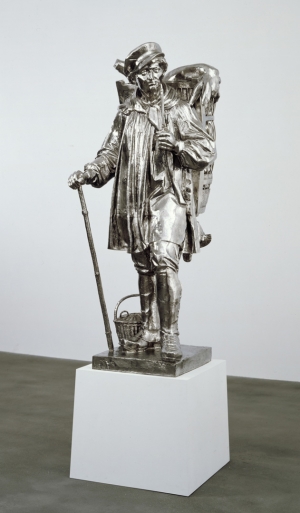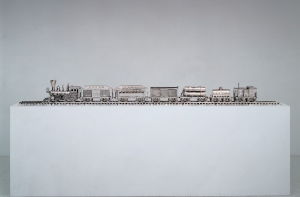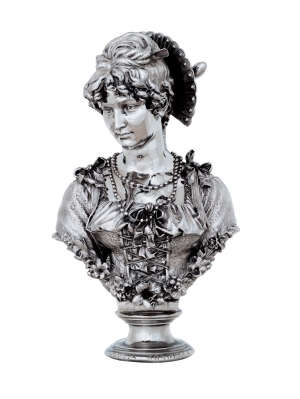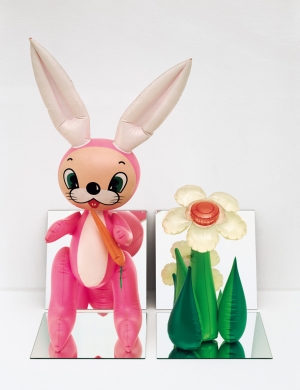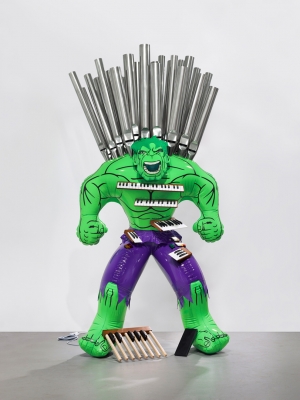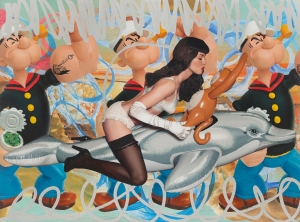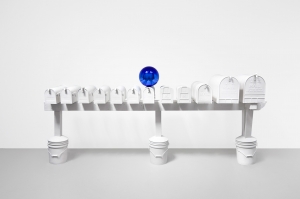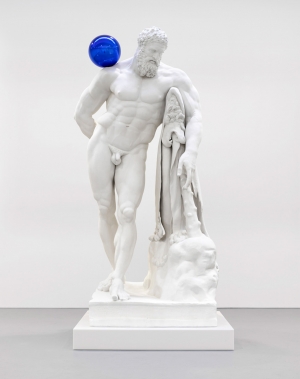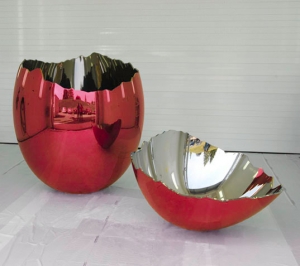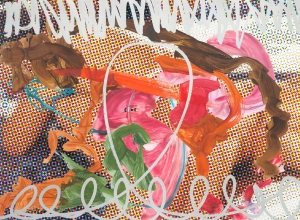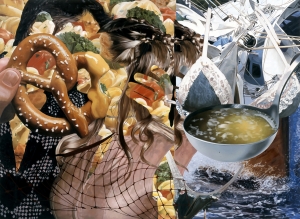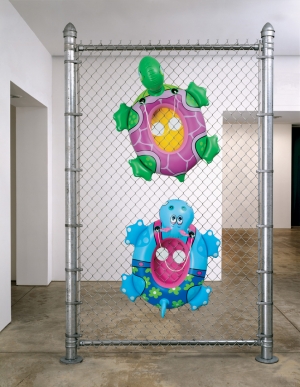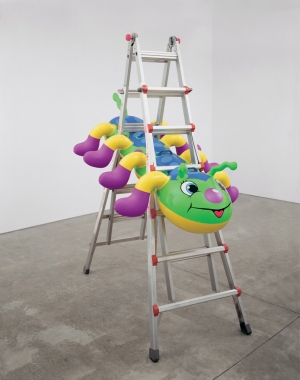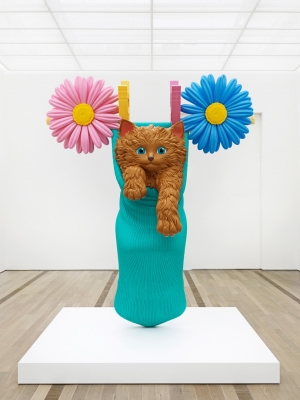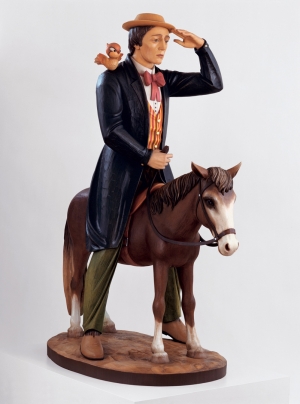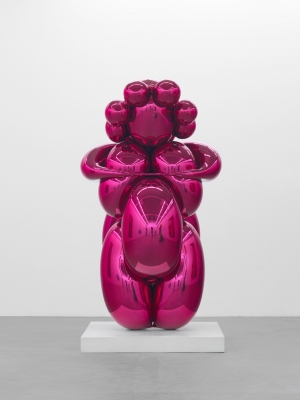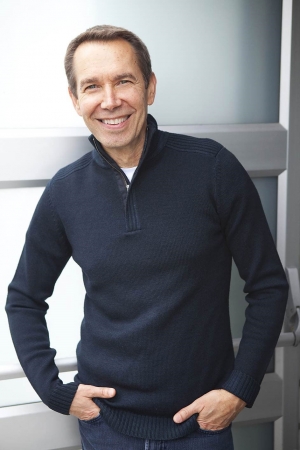
Jeff Koons
Artist Bio
Jeff Koons emerged in the 1980s as an innovative sculptor of exquisitely crafted objects, which quickly became icons of art history, the primary example of which is Rabbit, 1986. Cast in highly polished stainless steel from an inflatable Easter bunny novelty, the sculpture’s mirror-like surfaces have the eerie effect of including the viewer in their cool reflections.
The Broad’s Koons collection is unrivaled globally and holds representative work from each stage of the artist’s diverse and ever-changing career. In its celebration of consumer goods and its questioning of the notion of “good taste,” Koons’s art has been critically received as an ironic comment on the decadence of the 1980s and of capitalist culture. Koons himself, however, posits a less cynical view, citing his relationship to his young son, transcendence, and the eternal resonance of beauty as motivating factors for his art.
In his Banality series, Koons created sculptures of dimensions and details monstrous and absurd. These works, like Michael Jackson and Bubbles, 1988, are both compelling and disturbing in their size and seductive porcelain surfaces. The dead white of Jackson’s skin and his glamorous pose with Bubbles in matching clothing invite a chilling range of questions about celebrity and image making.
Celebration, an ongoing Koons series of sixteen paintings and twenty sculptures, rejoices in the rituals and images surrounding birthdays, holidays, and other party occasions. Tulips, 1995–2004, is among the grandest and most technically complex objects in the series, providing a perfect illusion of balloon flowers, constructed of seamless and mirror-polished stainless steel. The work is considered a successor to Koons’s inflatable pieces of the late 1970s.
In order to visualize and represent the desire that often accompanies the advertising of consumer products, for Triple Hulk Elvis II, 2007, Koons culled images from his giant collection of photographs and advertisements. The multiple sources were collaged into conceptual schematics and subsequently painted in a super-realistic, glossy fashion. While often concealed and veiled by toys and lush color, Koons takes Elvis Presley as his primary inspiration.
